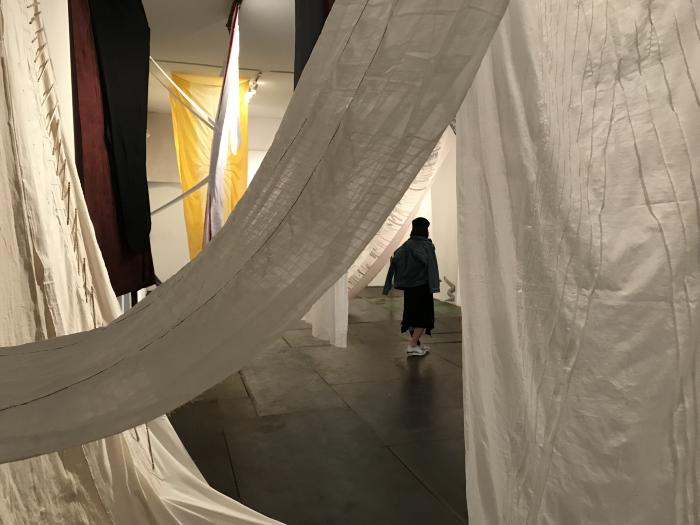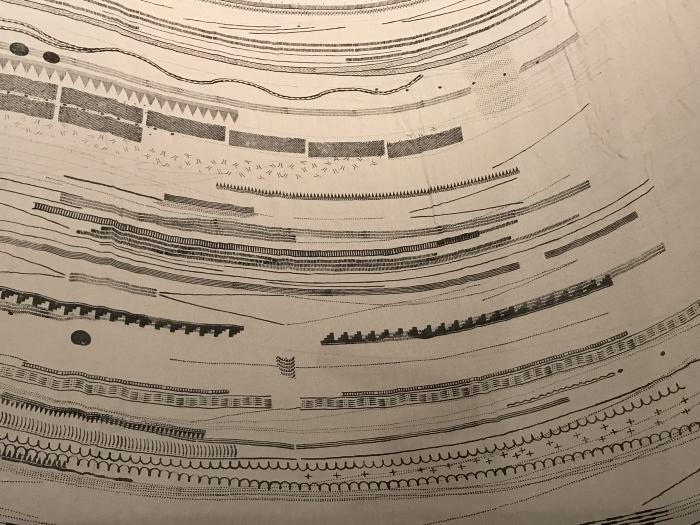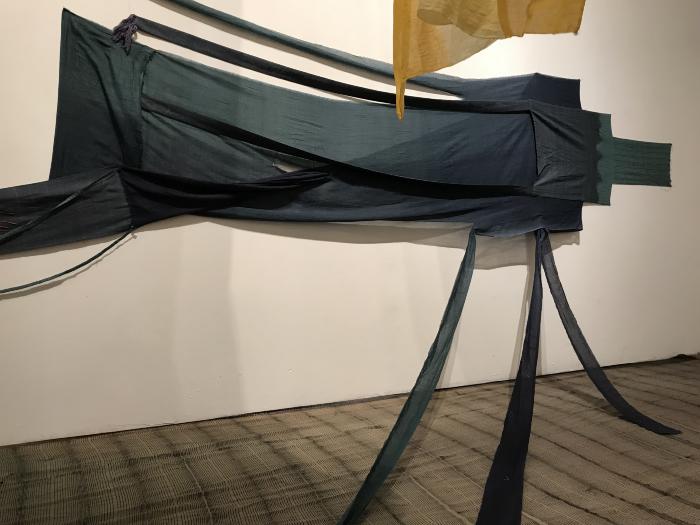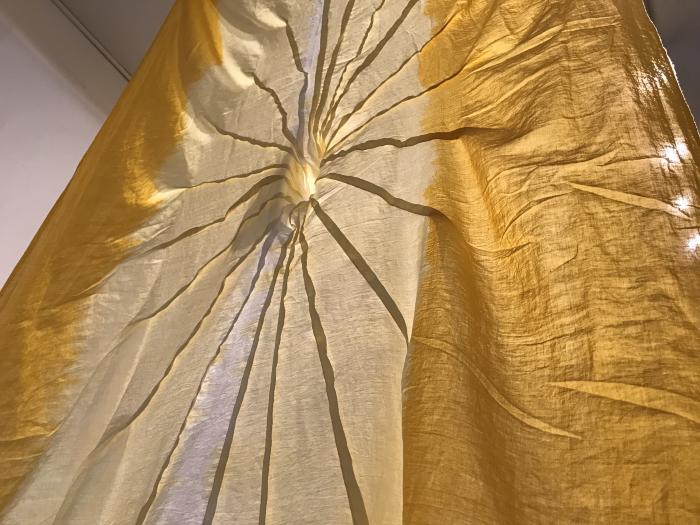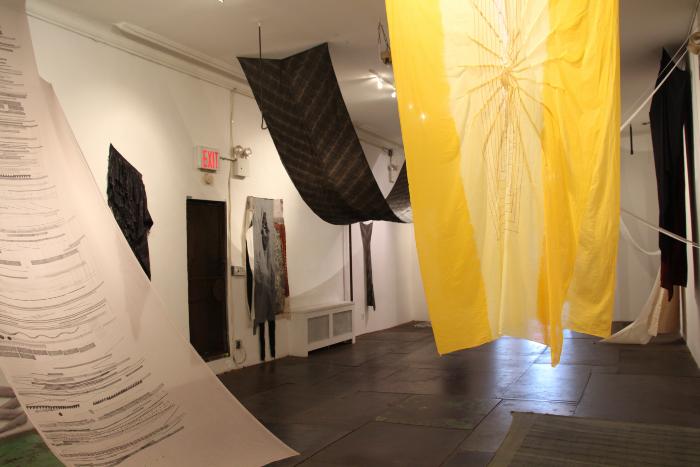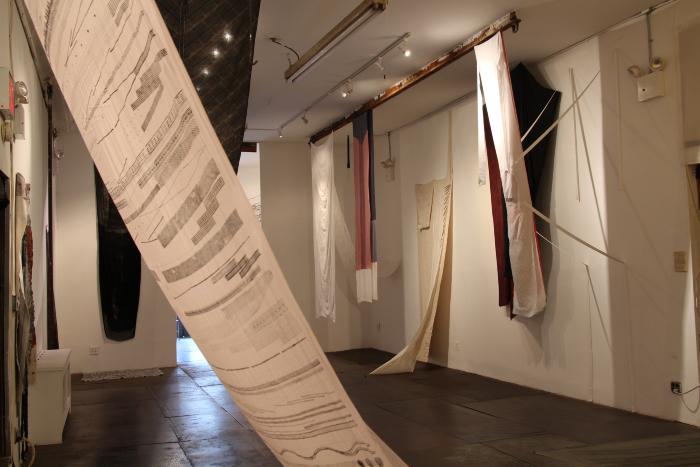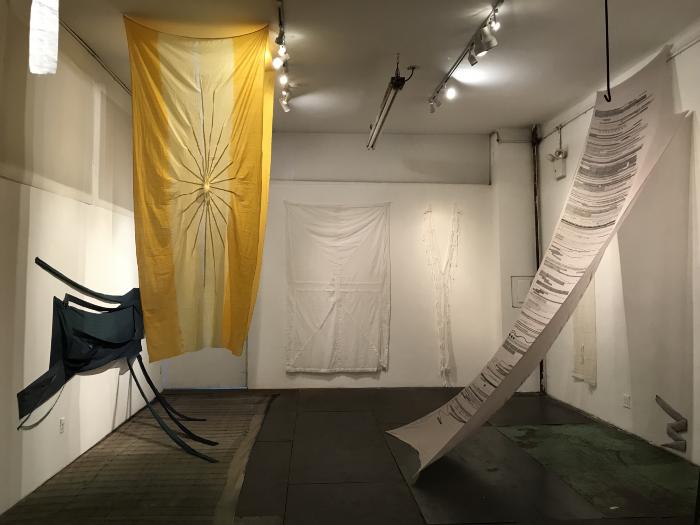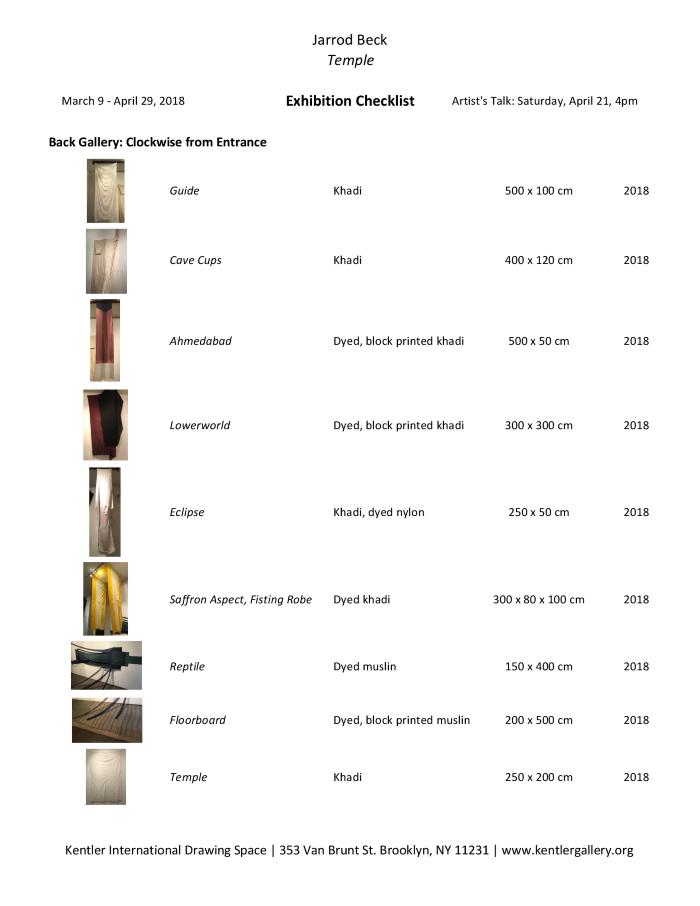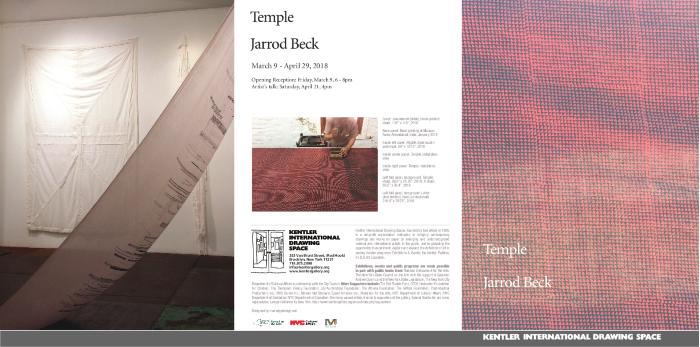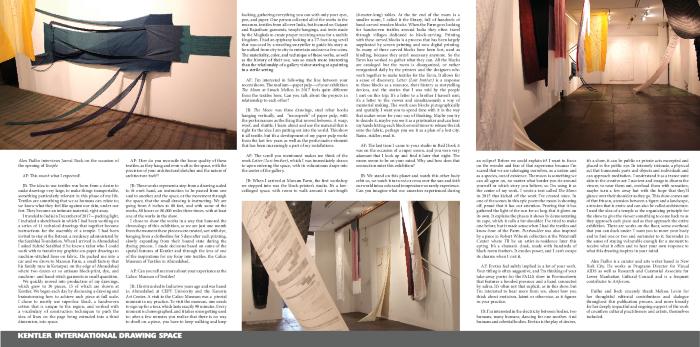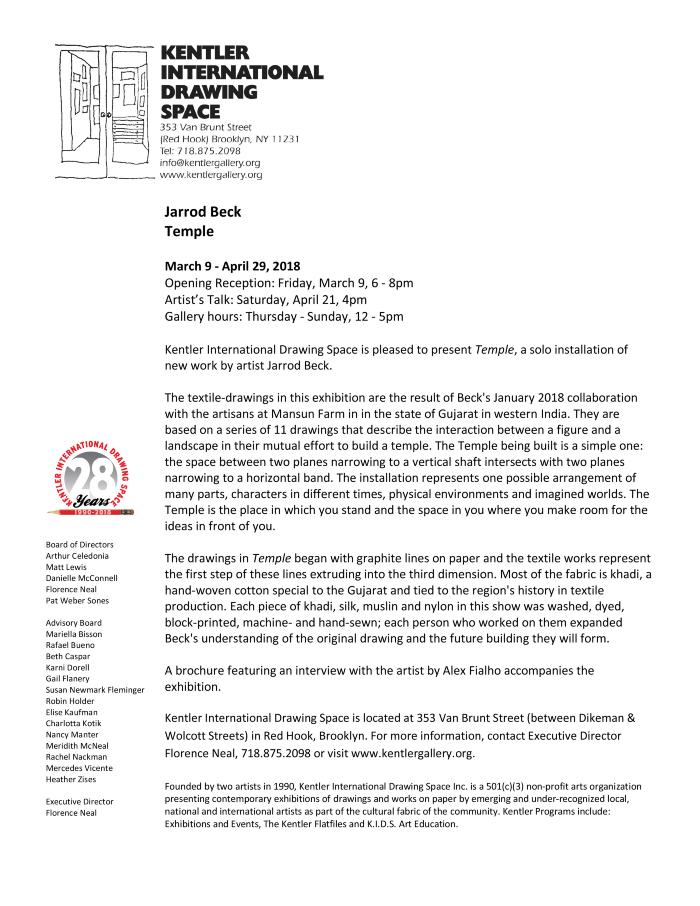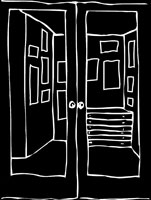exhibition
Jarrod Beck, "Temple"
Date
March 9 – April 29, 2018Opening Reception
March 9, 2018Artist
Jarrod BeckRelated exhibition
Focus on the Flatfiles: RitualRelated event
Artist's Talk with Jarrod Beckexhibition Images
Click to Enlarge.
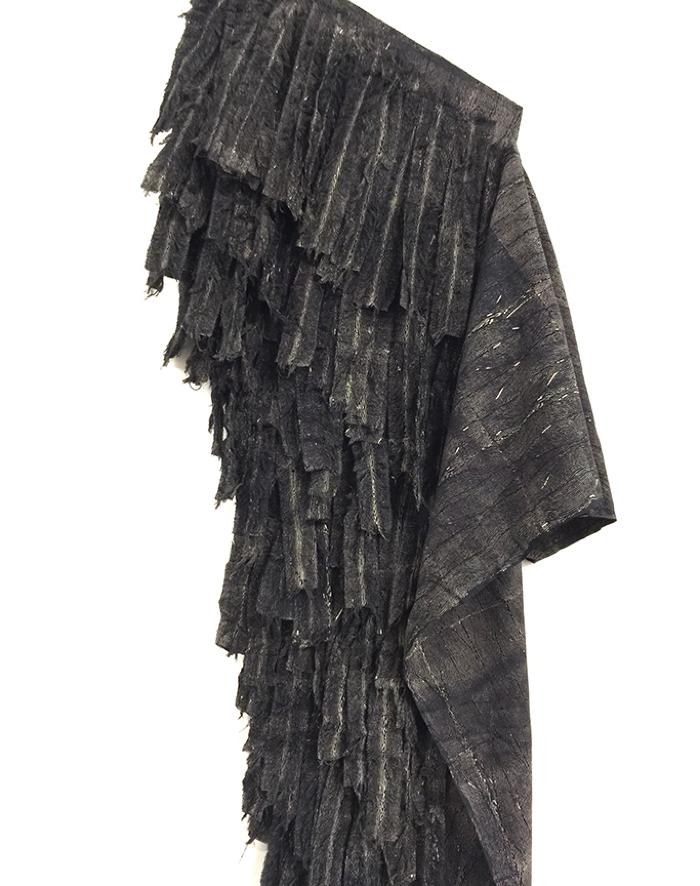
Furshoulder, dyed and block-printed khadi fabric with hand and machine stitching, 6' x 5' x 3", 2018
Press and Promotion
About the exhibition
JARROD BECK
Temple
March 9 – April 29, 2018
Reception: Friday, March 9, 6-8pm
Artist's Talk: Saturday, April 21, 4pm
Artist's Statement:
The textile-drawings in this exhibition are the result of my collaboration with the artisans at Mansun Farm in Kotarpur, Ahmedabad, in the state of Gujarat in western India, in January, 2018. The works are based on a series of 11 drawings that I brought to India, which describe the interaction between a figure and a landscape in their mutual effort to build a temple. This figure represents one person, the Guide, and then two people, and also the aspects that each choose to show one another. Ghosts and Mothers and Towers are obstacles in the way that impossible questions help the confounded find clarity. The temple being built is a simple one: the space between two planes narrowing to a vertical shaft intersects with two planes narrowing to a horizontal band. The installation at Kentler represents one possible arrangement of many parts, characters in different times, physical environments and imagined worlds. The Temple is the place you are standing in and the space in you where you make room for the ideas in front of you. I curated Ritual, an exhibition of drawings in the front room from the Kentler Flatfile archive. The ideas within that show, the feelings elicited, careful observations made, offer one way to occupy this temple.
Lines are instructions for building, also for excavation, some lines, even, tell you where to make things disappear. The drawings in Temple began with graphite lines on paper and the textile works represent the first step of these lines extruding into the third dimension. Stand with the fabric and sense the material; you’ve had cotton like it against your skin. Translate the drawing from your eyes, to your body and out into the world, or wait for the itinerant storyteller to translate these scrolls for you. A text accompanies the exhibition and describes one reading of the work as you move from piece to piece.
Most of the fabric is khadi, a hand-woven cotton special to the Gujarat and tied to the region’s history in textile production and a cousin to homespun in the Indian State that Gandhi chose to base his ashram. Each piece of khadi, silk, muslin and nylon in this show was washed, dyed, block-printed, machine– and hand–sewn; each person who worked on them expanded my understanding of the original drawing and the future building they will form. The works were influenced by my visits to the Calico Museum of Textiles in Ahmedabad; the stories told and care given by Suhrid and Asha Sarabhai; the expert brainstorming and translation of Ami Patel and Varsha Vadher; and my traveling companion and fellow translator Chris Adrian. My thanks to each of these beings and to Alex Fiahlo, Melissa Levin, Florence Neal and Sallie Mize for their patience and support during the making of the exhibition in New York.
This exhibition, in a previous form, was supported by an emergency grant from the Foundation for Contemporary Art. I’ll be working with the pieces during my residency at the Watermill Center this May. For more information please visit jarrodcharlesbeck.com.
A brochure with an essay by Alex Fialho accompanies the exhibition.
